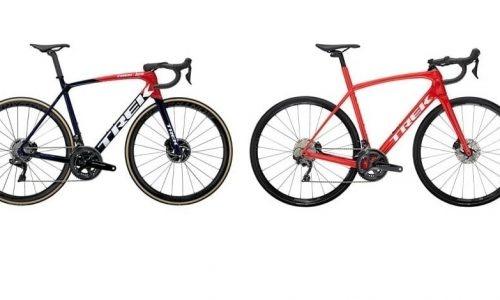Looking at improving your training routine? Or just looking to start a training routine and figure out what’s the best way to do so?
In this article, we will be going through the making of a training plan, how to keep motivated during your training, and peaking for your target event.
Creating The Plan
Specific For You
The first thing when it comes to making a plan will be making the plan specific to your riding and discipline of riding. If you are a road cyclist there will be no point doing a training plan specifically made for a BMX rider or mountain biker.
While some of these disciplines do a crossover in training slightly you will not be able to get the most out of your plan.
You also want this plan to be specific for your riding ability. There is no point going out there and finding a pro cyclist training plan and following that if you are a beginner because it will be too difficult and you will not be able to substance the training.
The same thing goes if you are an advanced cyclist; there is no point in doing a beginner’s plan as you will not see gains in your cycling from doing this.
When making your plan it is good to be specific for your needs; if you know you have some weaknesses it will be good to focus on improving on these weaknesses.
A good way of doing this is to make specific training days that target this weakness. For example, if you feel that your sprint finishes aren’t that great you could include some sprint into your training plan.
On the other hand, you still want to keep your strengths up to and don’t want to lose that as a strength – it is about finding a balance that will make you an all-round better rider.
Also, it is good to keep in mind, if you work full time or go to school, you need to plan your training around this so you want to make your plan specific for your daily routine.
If you are wanting to go for a 3-hour ride when you get back from work at 5 in the middle of winter when it is dark and cold you may not be able to keep this up and will end up not enjoying your training.
If you are serious about your training a power meter really helps your plan be even more specific and you will see more gains through your training plan.
An FTP (functional threshold power) test can really help with this. For those that don’t know what an FTP test is, it is a test to determine how many watts you could hold for a 1-hour all-out effort.
A common FTP test is when you go as hard as you can for 20 minutes, you then take the power you did for that 20 minutes multiply it by 95% and that is your FTP. From this, you can create specific training zones and tailor a plan for you and your needs.
If you aren’t willing to spend around $650 USD on a training tool another way to make some specific training zones for you is by heart rate. Some software determines your heart rate zones such as Training Peaks, Wahoo App, and Garmin Connect.
They can make your heart rate training zones from rides you have uploaded to their software or you can enter your max heart and it will make the zones for you.

Focussing On A Goal
When making a training plan it is always good to have a goal you are focussing on, this could be anything, such as better 5 min power, better technical riding ability, higher peak power.
If you have a goal it will make it easier to maintain your training routine and it’s good to see improvements on this goal to keep you motivated.
By just getting on your bike you will be able to see improvements but if your plan is structured for you around a specific goal you will see better improvement quicker.
When focussing on a goal you need to make sure this goal is achievable, you want it to make you excited to get to that point.
You don’t want this goal to be too hard though or you will get disheartened and will lose the drive to train for this goal.
Once you’ve got a goal for you to focus on you need to think about what your current fitness is now. It is important to be honest with this so that you are not setting too short of a time limit for you to achieve this goal.
If you are planning to go from a weekend warrior to holding the hour record this goal could be a little out of reach, but nothing impossible.
A more realistic goal could be you want to race the local road race and stay in the bunch for the whole race; this goal is more realistic and you have a higher chance of achieving this.
Once you have completed the goal you have set you can make a new goal for you to train for, then once you have completed that you can make another, and so on.
Next thing you know you have ticked off 5 goals rather quickly and you are now an all-round better rider. This is a very effective way of training and you will enjoy this type of training rather than just training without any goal or things to improve on.

Keep It Fun
Another important part to remember when making a training plan is to make sure there are days for you to have fun on a bike or even off the bike.
This keeps you fresh and motivated for the hard days on the bike. Fun days can be doing a different type of exercise such as if you are a road cyclist you could go for a mountain bike ride or go for a run, anything you enjoy doing that is some sort of workout. You don’t want this to be a full day off, we will include them into the plan as well.
It is important that you have some rides that aren’t just about specific efforts or trying to go as hard as you can, this can wear you out physically and mentally; you can also run the risk of overtraining or burning out which is not good and will not help you improve your riding.
Hard & Easy Days
When it comes to having a plan it is just as important that you have some easy days to go with your hard days. Easy days are a good rest for your mind and your body.
It gives you a break from the hard training and a chance to have some fun. Easy days can be done on or off the bike, whether you go for an easy ride with your mates or go do a different hobby for the day such as surfing, golf, or dirt bike riding, just anything you enjoy doing that gives you a mental break from riding your bike.
If you aren’t including these easy days in your training you do risk the chance of burning out and not wanting to do the training anymore. Even top athletes take these days off to have some fun and take their minds off the bike.
Overall it keeps you enjoying training on your bike and in the long run will work out to give you more benefits than it would go training on an easy day.
Types Of Training Sessions
There are a few types of on and off the bike sessions that will be beneficial to put in your training plan.
Endurance Training
Cycling is, for the most part, an endurance sport so you need to train that endurance to make you better for longer. An endurance ride normally consists of riding for at least 120 minutes and done with your heart rate 35 – 45 percent under your max heart rate.
When you see the pros doing 5hr+ days on the bike that is because they are training their endurance. Big road races can take around 6hrs to finish so if they have not trained their endurance riding they will blow up 3hrs in and won’t be able to make it to the finish.
Endurance training will increase your aerobic capacity and help you burn fat more effectively. Summer days may seem more appealing to do your long endurance rides, but if you’re looking to improve your riding for the next racing season it is best to do these long endurance rides during winter, in the offseason.
Endurance Training Session
120 minutes+ at 35 – 45% of maximum heart rate
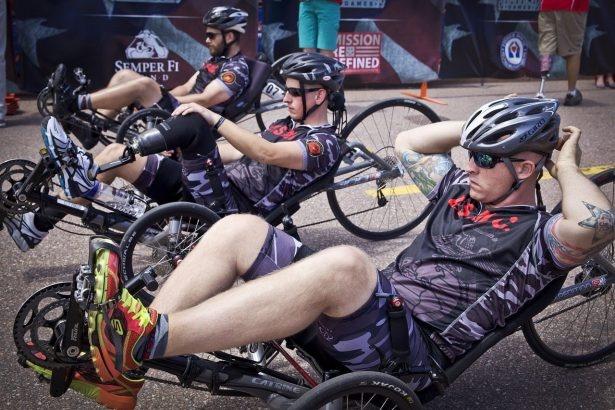
Threshold Training
In cycling when you are going hard you build up lactate and/or lactic acid; it often happens when you are around 85% of your maximum heart rate.
Your lactate threshold is when your body starts to be overcome with fatigue and the concentration of lactate and/or lactic acid in your bloodstream increases significantly.
Raising the level of effort you can do before you reach this point is extremely beneficial in cycling.
In races, you are likely to be riding at threshold on something like a long steady climb. Having a higher Lactate Threshold in a race will help you stay in that breakaway or smash out a good time trial. A higher Lactate Threshold is a great thing to have and will step up your game in the racing scene.
Threshold Training Session
Warm-up then into 3x – 4x 15 min at 90% of max heart rate. 5 min rest between sets, finish with at least 20min cooldown.
Interval Training
When racing there are always short sharp bursts of speed, be it an attack or going up a 2 – 6-minute climb. In interval training you simulate just that, doing regular bursts of speed to build up your cardiovascular fitness and maximizing your aerobic capacity, which is also known as your VO2 max.
Everyone’s VO2 max is very different; it largely comes down to your genes and age which means it is not possible to increase more than your genetic maximum, but it ensures you are achieving this genetic maximum every time.
Another benefit of training at VO2 max is you will also be increasing your endurance and strength.
Interval Training Session
Warm-up then into 5x 4 minutes at a high intensity (trying to hit max heart rate) with 3 minutes rest between, finish with a good cool down.
Recovery Training
Recovering is just as important as the hard training sessions, your body needs time to repair damaged muscle tissue, refuel muscle glycogen, and then prepare for the next hard training days.
Like we went over before your fun days are an active recovery day to let your body repair itself. A recovery session should be at a super low intensity and if you are on the bike there should be no sprint or hills; try to pick a flat ride, and just cruise (no racing other riders or Strava hunting).
Recovery Training Session
30-90 minutes very easy riding
Or
A hobby you do that is at a low intensity
The Gym
The gym can also be a great place to train for cyclists. You can build more power with certain workouts and work on specific muscle groups that might need working on. There are a few workouts that cyclists seem to favor e.g Squats, Deadlift, Lunges, Leg Press.
But it’s always best to get a personal trainer, they can make a specific gym session for you to do based on what you think you need to work on and your gym experience.
They will also teach you the right technique to prevent injuries and get the maximum out of each session. The gym is a really great place to take your riding to the next level.

Staying Motivated
Goals
Once you have a rough training plan the first thing you want to do is set some goals to keep you focussed and enjoy the training.
First, you want to figure out what your main goal is. This could be a major race or just hitting a specific power.
After you have got your main goal then you can make some little micro-goals that lead up to your big goal, these micro-goals can be:
- Hold a certain amount of power
- Get a result in a smaller race e.g club race
- Go up a grade in your local race
- Get to a certain bodyweight
- Lift a certain amount of weight at the gym
These goals don’t have to be too hard or too big, they are just little things that keep you interested and enjoying training.
You want a new micro goal every 2-4 weeks so that it keeps you interested and you are ticking off lots of goals; this will make you feel good about yourself and enjoy your training more.
A good way to get your micro-goals to help you achieve your main goal can be to make your micro-goals progressively harder.
That way you know you will be ready for the try and achieve your main goal and it won’t be so daunting after you have achieved all of your micro goals.
Target Events
To keep motivated it can help to have target events planned throughout the season. Normally it is good to have 2-3 races you really want to peak for during the season, these will be the events you want to do your best in.
Having target events keep you motivated because you are training towards something in the hope of doing well, and having something to train for is a big factor in keeping motivated as you are not just training because you can but because you want to.
You can also have some smaller target events that you don’t necessarily want to peak for but you want to be riding well. They are also good times to test your fitness and see how your training is going.
Your smaller target events do not have to just be your discipline of riding, for example, if you’re an XC racer you can target an enduro race to get up your descending skill and try to contest the podium in an enduro (an xc rider on the podium would earn you some major respect).
Riding With Buddies
A great way to keep motivated is to ride with a friend or have a group of riding buddies. This can make your ride more interesting by having a good yarn and challenging each other.
Riding with friends can also get you motivated to get out of the house on those days when you can’t really be bothered to get out and going for a ride.
Riding buddies can help challenge you and make you push harder in training and really help you get those gains.
A bit of friendly competition is always good and can really make you unlock a new level of hurt in your training.
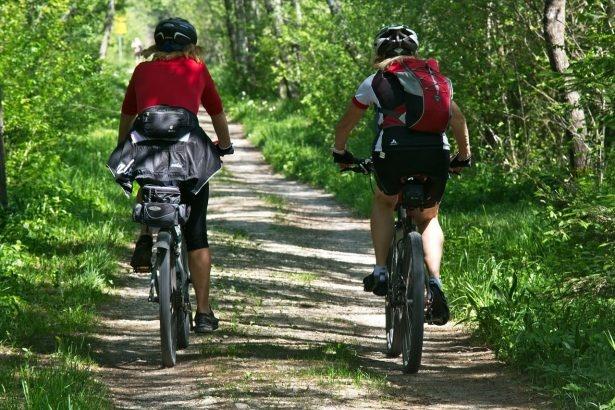
Write It On Paper
Physically writing down your training plan can also keep you motivated to get out there and do it.
If you just have your training in your head, when you have one of those days you just can’t be bothered going out and getting it done it’s easy to just forget about that training session; but if it is written down you know you have missed that session and you won’t feel great about it.
Having it down on the paper kind of guilts you into going out and getting the session done.
Rewarding Yourself
After your training sessions take a minute to take in the good feelings that exercise gives you. This internal reward can help you make a long term commitment to training.
There are also external rewards. When you have reached a goal in your training you can treat yourself, this can be a new set of cycling kit, or headphones to enjoy while training.
Peaking For An Event
Build-up To The Event
The build-up to an event is probably the most important; it is all the training you have done, your dieting, and all the preparation that has gone in weeks before the event.
Getting the build-up done right is a hard thing to do. It’s tricky because you don’t want your fitness to peak before you go into an event.
If you have a coach this will help as they will tailor your program and know how to get your fitness peaking at the time of the event.
It is also easy to train too hard leading up to a race and be burnt out which is worse than going into a race at 90% fitness.
Nutrition can be hard to master; you want to be lean so you aren’t carrying any unnecessary weight but you all need to be eating well and getting in all the nutrients your body needs to recover from training and fuel you.
Another thing to consider in the build-up to an event is the condition and how well your bikes are running, now can be a good time to upgrade some part of giving the bike some love. It best to do this a little bit out from the race as if you have any issues you can fix it without being rushed for time.
Also in the build-up to an event, if possible, you can go pre-ride the course to get to know it a little better and find some places where you could attack or recover. This will give you a big advantage over riders that have not done as much course practice as you.
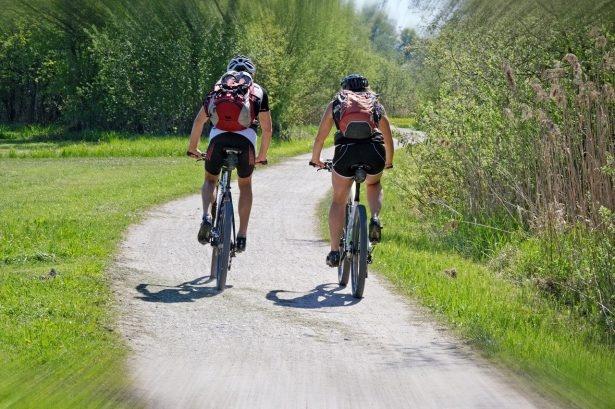
If it’s not possible for you to go out to the track until closer to race day it can be good to do a bit of research on the course you will be racing.
You can look up the altitude, weather conditions in that area, humidity, course map, and elevation; and if there are some pictures or videos of the course you can have a look at those. This can take away some of the stress leading up to an event and make you even more prepared for the event.
Race Week
The week leading up to the race is when you should dial your training back, focus on good nutrition, get dialed in on the course, and make sure everything is all ready for race day.
During race week you want to dial your training right back, you don’t want to be doing any real hard sessions on massive endurance rides. You want to be well-rested and ready for race day.
Normally in the week before I don’t ride for any more than 1:30hr and might do the odd interval but nothing that’s going to fatigue me for race day.
Nutrition is really important on race week. You want to get in some good food to keep all the nutrients up and make sure your body has plenty of energy to go all out on race day.
There is nothing worse than starting the race and having no energy to go hard when you know you have the legs too.
If it’s possible to pre-ride the racecourse it is good to get out there and figure out the course, identify any technical features and get them dialed so on race day you don’t have to think about it you already know how you’re going to ride it.
Another good thing to do while pre-riding the course is to identify some good places where you could launch an attack and some places where you can get some rest in.
While pre-riding the course you should make sure your bike is working as it should and if so you can make some adjustments to your bike to make it more suited to the course.
Night Before
The night before race day you want to make sure you get a good dinner in, plenty of carbs to give you energy on race day. You want to organize everything so that you don’t need to think about it the next day and can be fully focussed on the race.
You can think about some race tactics for tomorrow and double-check everything to make sure you are ready. Also, you want plenty of sleep the night before the race so you are well-rested and ready to go.
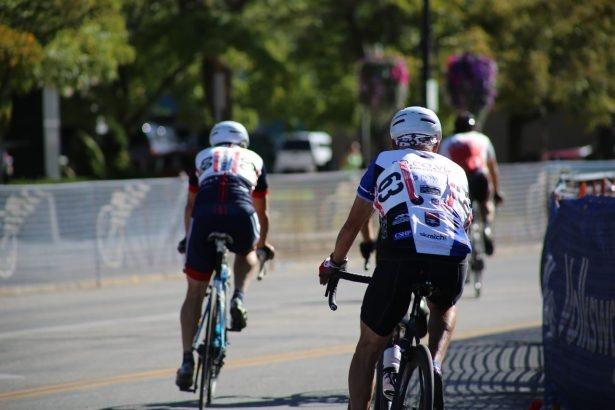
Race Day
Race day is here and you have been training for this day for months. It is important that you enjoy it and go out there and go all out.
Even now the preparation isn’t done; on race day you want a good meal at least 3 hours before the race so you have the energy to get you through.
You want to get all you race nutrition ready as well. If you don’t eat and drink during the race you could run the chance of blowing up which will ruin your race.
Before the race you want a good warm-up if you know the start is going to be all out, you want to get the heart pumping and wind the legs up a bit.
In my warm-up I do more high cadence than high power, this gets the heart rate up but doesn’t put too much fatigue in the legs.
After your warm-up it’s time to race, you have prepared for this and have done as much as you can do to get yourself in the best form so all you can do is know if have fun and go hard.
Conclusion
Training and racing should all be enjoyable, after all the reason you are cycling are that you enjoy the sport. If you are starting to lose focus or interest in your training remember to take a break, that should reignite the enjoyment you get from riding your bike. So remember to have fun training because as they say “fun is fast”.

I’m a Cross Country Mountain Bike Racer from New Zealand. I have been racing bikes since I was 9 years old and have progressed my way up to the level I am up now. I have had 3 XC National Titles and am current u19 National Champ, my future goal is to get to the UCI scene and make a living from riding my bike.

